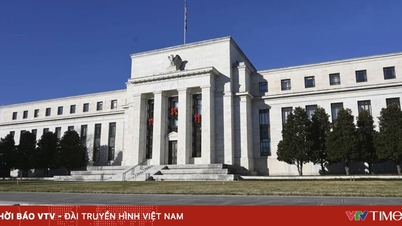The Federal Open Market Committee, the policy-making body of the US Federal Reserve (Fed), has just concluded the first day of its October policy meeting. In the context that the Fed is in the process of shifting from a tightening policy to a loose monetary policy to support the US labor market, this meeting is receiving a lot of attention.
The Federal Open Market Committee enters its October policy meeting with the US government shut down. The only official data it has on hand is the October consumer price index, released late last week.
The shutdown has halted the flow of key economic data at a time when policymakers and investors are concerned about the health of the labor market, inflation, consumer spending and business investment, Reuters reported. However, much of the data from private sources will continue to be released, although it will also rely in part on reports from government agencies before the shutdown.
Regarding some data from private sources, the AP news agency cited figures just released by the Conference Board showing that the consumer confidence index in the US fell to 94.6 points in October, down sharply from 109.5 a year ago.
In addition, the index of short-term expectations of Americans about income, business conditions and the job market fell to 71.5, much lower than the 80 mark, the level that can signal a recession.
At this October meeting, most newspapers predict that the Fed will continue to cut interest rates by 0.25%. But there are more important issues to pay attention to: the plan to shrink the balance sheet, or the views of the members of the Open Market Committee on the next interest rate cuts.
Barron's said the shrinking of the Fed's balance sheet is important to investors because the portfolio of securities the Fed holds is affecting the liquidity available to the economy. As the Fed's balance sheet has shrunk from a peak of nearly $9 trillion in April 2022 to $6.6 trillion last week, reserves have fallen to the point that some short-term borrowers have had to start repaying their loans.
Forecasting interest rates in the coming time, Bloomberg said that although the Fed will cut interest rates for the second time in a row at the meeting ending tomorrow, any attempt to extend the easing cycle beyond October may face new opposition from a group of officials still concerned about inflation.
Now, many Fed leaders are stressing that inflation has been above 2% for more than four years. And they don’t expect to hit that target again until 2028.
Source: https://vtv.vn/nhung-can-nhac-truoc-cuoc-hop-chinh-sach-thang-10-cua-fed-100251029113941221.htm


![[Photo] Flooding on the right side of the gate, entrance to Hue Citadel](https://vphoto.vietnam.vn/thumb/1200x675/vietnam/resource/IMAGE/2025/10/28/1761660788143_ndo_br_gen-h-z7165069467254-74c71c36d0cb396744b678cec80552f0-2-jpg.webp)


![[Photo] Hue: Inside the kitchen that donates thousands of meals a day to people in flooded areas](https://vphoto.vietnam.vn/thumb/1200x675/vietnam/resource/IMAGE/2025/10/29/1761738508516_bepcomhue-jpg.webp)

![[Photo] Prime Minister Pham Minh Chinh chaired a meeting to discuss solutions to overcome the consequences of floods in the central provinces.](https://vphoto.vietnam.vn/thumb/1200x675/vietnam/resource/IMAGE/2025/10/29/1761716305524_dsc-7735-jpg.webp)
































































![[Video] 24-hour news on October 29, 2025: Prime Minister Pham Minh Chinh: No one in the Central region will be left hungry or cold due to floods](https://vphoto.vietnam.vn/thumb/402x226/vietnam/resource/IMAGE/2025/10/29/1761743011202_z7168421557697-8aba01bb34381f15c3b1423843c0e51f-jpg.webp)


![[Live] Concert Ha Long 2025: "Heritage Spirit - Brightening the Future"](https://vphoto.vietnam.vn/thumb/402x226/vietnam/resource/IMAGE/2025/10/29/1761743605124_g-anh-sang-am-thanh-hoanh-trang-cua-chuong-trinh-mang-den-trai-nghiem-dang-nho-cho-du-khach-22450328-17617424836781829598445-93-0-733-1024-crop-1761742492749383512980.jpeg)




























Comment (0)